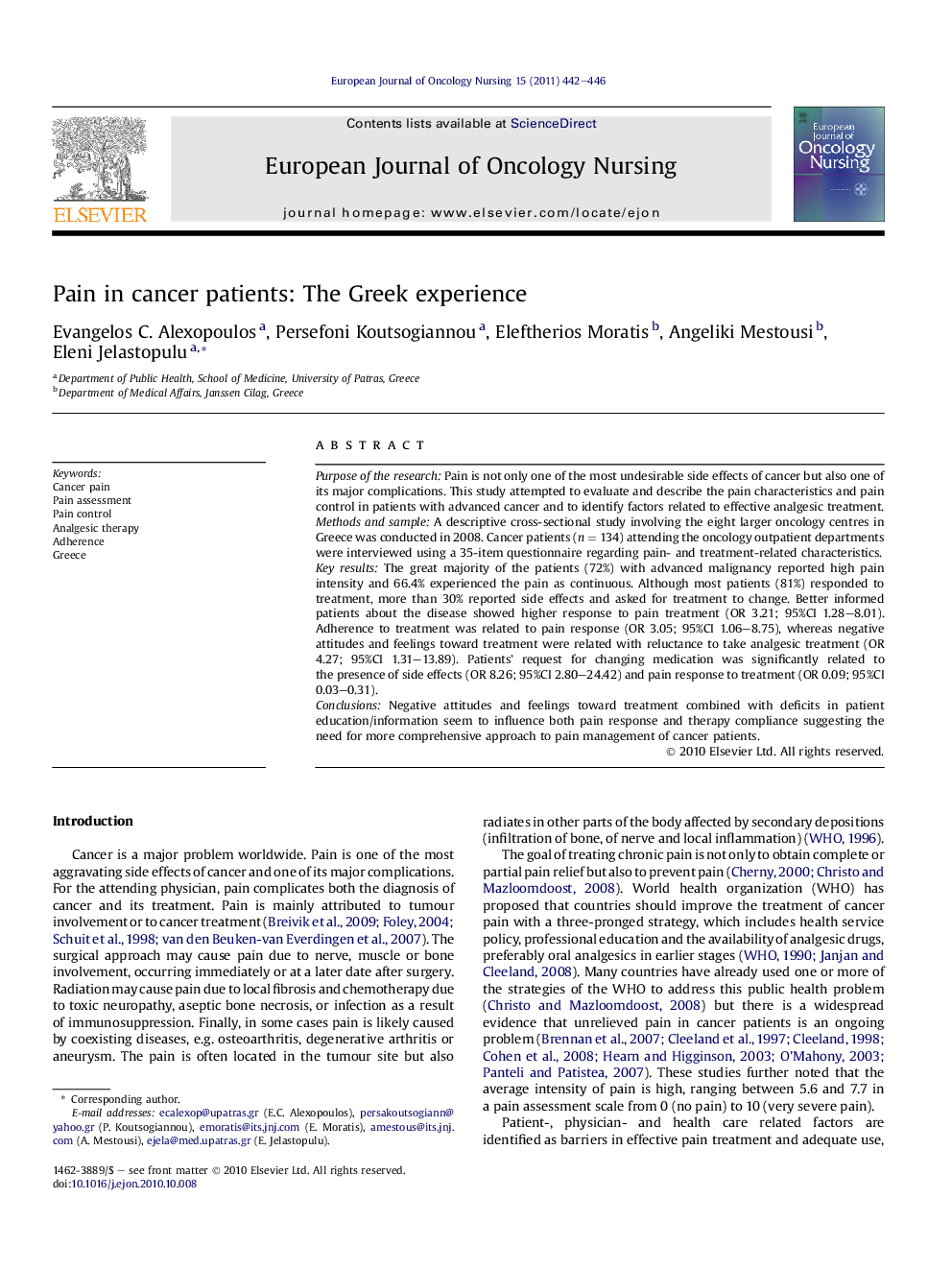| Article ID | Journal | Published Year | Pages | File Type |
|---|---|---|---|---|
| 2649832 | European Journal of Oncology Nursing | 2011 | 5 Pages |
Purpose of the researchPain is not only one of the most undesirable side effects of cancer but also one of its major complications. This study attempted to evaluate and describe the pain characteristics and pain control in patients with advanced cancer and to identify factors related to effective analgesic treatment.Methods and sampleA descriptive cross-sectional study involving the eight larger oncology centres in Greece was conducted in 2008. Cancer patients (n = 134) attending the oncology outpatient departments were interviewed using a 35-item questionnaire regarding pain- and treatment-related characteristics.Key resultsThe great majority of the patients (72%) with advanced malignancy reported high pain intensity and 66.4% experienced the pain as continuous. Although most patients (81%) responded to treatment, more than 30% reported side effects and asked for treatment to change. Better informed patients about the disease showed higher response to pain treatment (OR 3.21; 95%CI 1.28–8.01). Adherence to treatment was related to pain response (OR 3.05; 95%CI 1.06–8.75), whereas negative attitudes and feelings toward treatment were related with reluctance to take analgesic treatment (OR 4.27; 95%CI 1.31–13.89). Patients’ request for changing medication was significantly related to the presence of side effects (OR 8.26; 95%CI 2.80–24.42) and pain response to treatment (OR 0.09; 95%CI 0.03–0.31).ConclusionsNegative attitudes and feelings toward treatment combined with deficits in patient education/information seem to influence both pain response and therapy compliance suggesting the need for more comprehensive approach to pain management of cancer patients.
